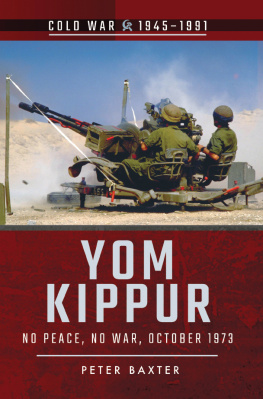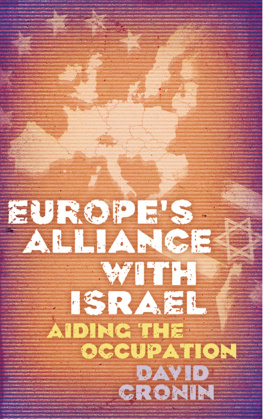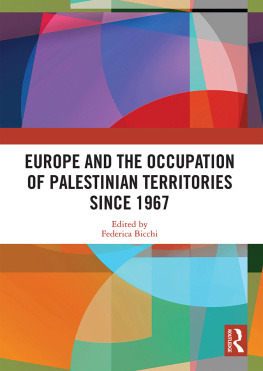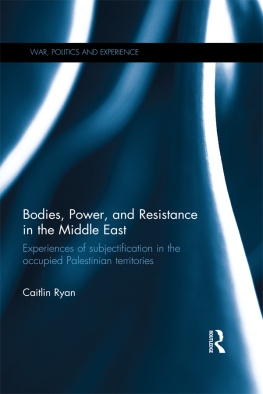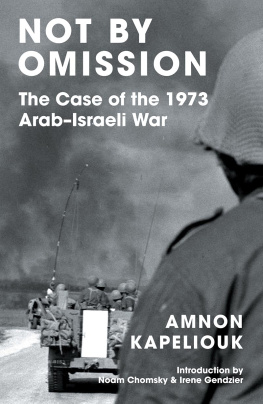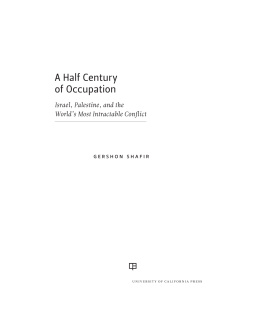CURSED VICTORY
ISRAEL AND THE OCCUPIED TERRITORIES: A HISTORY
AHRON BREGMAN

For
Miriam Eshkol
Contents
PART ONE
The First Decade, 19671977
PART TWO
The Second Decade, 19771987
PART THREE
War and Diplomacy, 19872007
Shortly after the release of Cursed Victory in the UK, in the summer of 2014, an all-out war broke out between Israel and the Palestinians in the Gaza Strip. The roots of this fierce clash, which came to be known in Israel and elsewhere as Operation Protective Edge, were to be found in Israels continuing occupation and the brutal pressure its army put especially on the Gaza Strip, where nearly two million Palestinians live in appalling conditions.
Israel, as we have seen, officially evacuated the Gaza Strip in 2005 under Prime Minister Sharon, declaring that it was no longer an occupied land and that Israel had no obligations under international human rights law towards Gazas population. However the majority of the international community, including the UN, did not accept that this was a legitimate evacuation, since Israel, even after the departure of its troops and settlements, effectively continued to control the Gaza Strip from the outside through various methods. It did so from the sky by using electronic devices such as surveillance balloons, floating as high as 300 metres above the Gaza Strip, to collect data about every corner of the Strip and its people. This intelligence was then used by pilots to assassinate Palestinian activists Israel deemed terrorists by firing missiles at them from helicopters and dropping bombs on them from aeroplanes.
Gazans, over the years, became accustomed to the constant overhead buzzing of helicopters, planes, and particularly the notorious dronesunpiloted air vehicles, used by the Israelis for surveillance and attacks. A Gazan named Yamin explains in an interview that: when we hear an Apache [helicopter] or an Israeli F16 [jet] we know that it will only be there for a while and we can go into our houses for
Israel also continued to maintain control of the Strip from the sea where its navy, which constantly patrolled the Mediterranean water along Gazas coast, effectively sealed off the Strip, preventing anyone from approaching the area by sea. When on one occasion a Turkish flotilla attempted to pass through the Israeli navy to bring food and supplies to aid the Gazans, the Israelis attacked them, killing several people on board and seizing their ship. Above all, Israeli control of the Gazans manifested itself in the monitoring of the entries into and the exits from the Gaza Strip, through which Palestinians could depending on changing Israeli moods travel to the West Bank. Often, Gazans asking for exit permits to visit family and friends on the West Bank or to go there on business trips had to pay back by providing Israeli officials with intelligence on life in the Gaza Strip and on specific people there, thus effectively becoming collaborators with Israels remote-control occupation.
IMPOSING A BLOCKADE
The rise to power of Hamas, the Palestinian Islamic movement, in 2007, turned out to be a turning point for Gaza, leading to even harsher Israeli treatment of its people. Regarding Hamas as a sworn enemy, successive Israeli governments attempted to topple its leadership by turning to a tactic which had proved effective in Lebanon in 1982.
At that time, long before the birth of Hamas, Israels leading Palestinian enemy was Yasser Arafat, who would dispatch his guerrillas to strike at Israel from his then headquarters in Beirut. Keen to disrupt Arafats activities, Israel invaded Lebanon and, in the summer of 1982, it imposed a blockade on its capital; as an artillery officer I was part of the IDF machine which operated this blockade.
Surrounding Beirut from all sides and controlling it from the air and sea too, the Israeli military cut off electricity and water supplies, and restricted the amount and types of foods, particularly flour, entering the city; at the same time, artillery, aeroplanes, and warships kept bombing large sections of Beirut. The Israelis hoped that the pressure on the capital the fire, restrictions on food, water, and electricity would break the morale of the Beirutis and they would then turn their backs on Arafat. It worked well: in August 1982, the Lebanese government exhausted by the continuing Israeli tactics and the destruction of their capital demanded that Arafat and his guerrilla leave Beirut, at which point the Palestinian leader relocated to Tunisia.
Since Hamas has come to power in Gaza, the military has implemented the same tactics it did in Lebanon. Taking advantage of its air, sea, and land control of the Strip, Israel has imposed a strict blockade on the Gazans in order to make their lives hell and break their spirit in the hope that they turn their backs on Hamas.
The most visible aspect of the Israeli blockade on Gaza was the restrictions it imposed on the imports of foods; the aim was to allow the Gazans just enough food and no more. The Israelis developed mathematical formulas to measure the number of days it would take the Gazans to run out of each particular product, what the Israelis called the length of breath. Lower and upper lines were set up to give the army advance warnings of shortages and surpluses. If, and when, the upper line for a given food item was reached, its import was blocked, only to be topped up when an advance warning was issued, based on the mathematical formula, that the lower line was reached. For the Gazans, this heartless system produced food insecurity and total dependence on the good will of the Israelis. At the same time, food items regarded by the Israelis as luxuries such as fruit tins disappeared altogether from shop shelves.
Building materials were also restricted under the Israeli blockade: cement, gravel, and steel bars were all banned which, in turn, triggered a severe housing shortage as only a fraction of the 40,000 housing units needed to meet natural population growth and the loss of homes destroyed during previous Israeli attacks could be built. The housing crisis, which was directly caused by the Israeli blockade, had devastating humanitarian consequences, as many Gazans had to live in increasingly cramped living quarters. Gazan Mihdad Abu Ghneimeh, who lived in a house in eastern Gaza City that was partially destroyed in an Israeli attack with 26 extended family members and his wife and seven children all in the same 30 square-metre bedroom, described the dire conditions:
I am tired of this situation. None of us has any privacy. My wife is obliged to cover her head all day since my extended family also lives with us. All children study in the same room where we all sleep; it has no windows and its door cannot be locked. As my children range from a few months to 14 years old, and they are boys and girls, it is not appropriate for them to live side-by-side. This often results also in fights and tension.
Gazas farmers were also targeted by the Israeli blockade, as they were totally or partially prevented from accessing land located up to 1,000-1,500 metres from the perimeter fence surrounding Gaza and separating it from Israel; altogether the army restricted farmers access to 17 percent of the total land mass of the Gaza Strip which is 35 percent of its agricultural land. To stop Palestinian farmers from getting into the banned areas, the Israeli Air Force dropped warning leaflets and bulldozers would cross the perimeter fence into Gaza to raze to the ground greenhouses and uproot fruit trees; troops would often open fire against farmers trying to access their own lands, thus turning the forbidden areas into killing fields. Farmers lucky enough to be able to access their fields would see much of the fruits and vegetables rot on trees as restrictions on the export of goods out of the Strip were also imposed without any advance warning.


